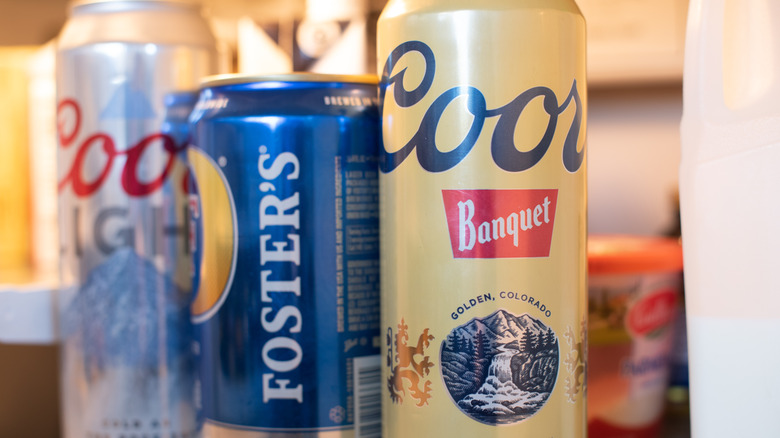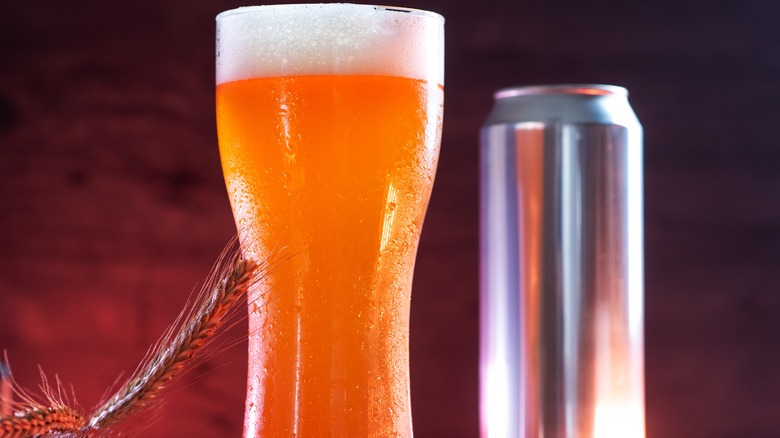Why Brewers Choose 12 Oz Vs 16 Oz Beer Cans
Beers are often sold at retail, grocery, and convenience stores in either 12-oz or 16-oz can size options. Depending on what you're looking for on a particular occasion, you might choose the 12-oz variety because those won't heat up as quickly when you're in more of a sipping mood.
On the other hand, you might have determined that you want to pour the equivalent of a pint into your glass at home and instead opt for the 16-oz can, also known as a "tallboy." There are other beer can size selections including the 19.2-oz "stovepipe" and the 32-oz crowler, the latter of which has become all the rage during the rise of craft breweries (via Vinepair).
But the most common beer can sizes are the 12-oz and 16-oz cans (per USA Beer Ratings). Consumers have developed their own preferences, but what about the brewers themselves? Does it matter to a brewer whether they distribute their product in a 12-oz or 16-oz can and are there any discernible differences in taste and quality between the two?
Beer can size can matter
There can indeed be subtle differences among can sizes, though it comes down to scrutinizing the minute details of the science. Essentially, if a brewery converting from a 12-oz to a 16-oz can on a packing line does so incorrectly, it could potentially lead to alterations in the amount of dissolved oxygen and CO2, which might adversely affect a beer's taste or quality. The price point is another factor that may lead a brewer to go with 12-oz cans over 16. Analyzing the cost of a 12-oz and 16-oz beer per ounce reveals that it is cheaper to sell 12-oz cans. (via The Takeout).
While there are still breweries that offer both, some microbrewers who previously specialized in 16-oz cans are moving more toward 12-oz cans, especially for certain beer styles where it makes sense such as lagers and pilsners. These "boat beers," often enjoyed during the summer months, won't get warm as fast in the 12-oz iteration and it's easier to fit more into a cooler (via Vinepair).
In the end, a consumer will make their decision of what size can to buy based on personal preference, but cost and volume will generally play a major role in that decision.

